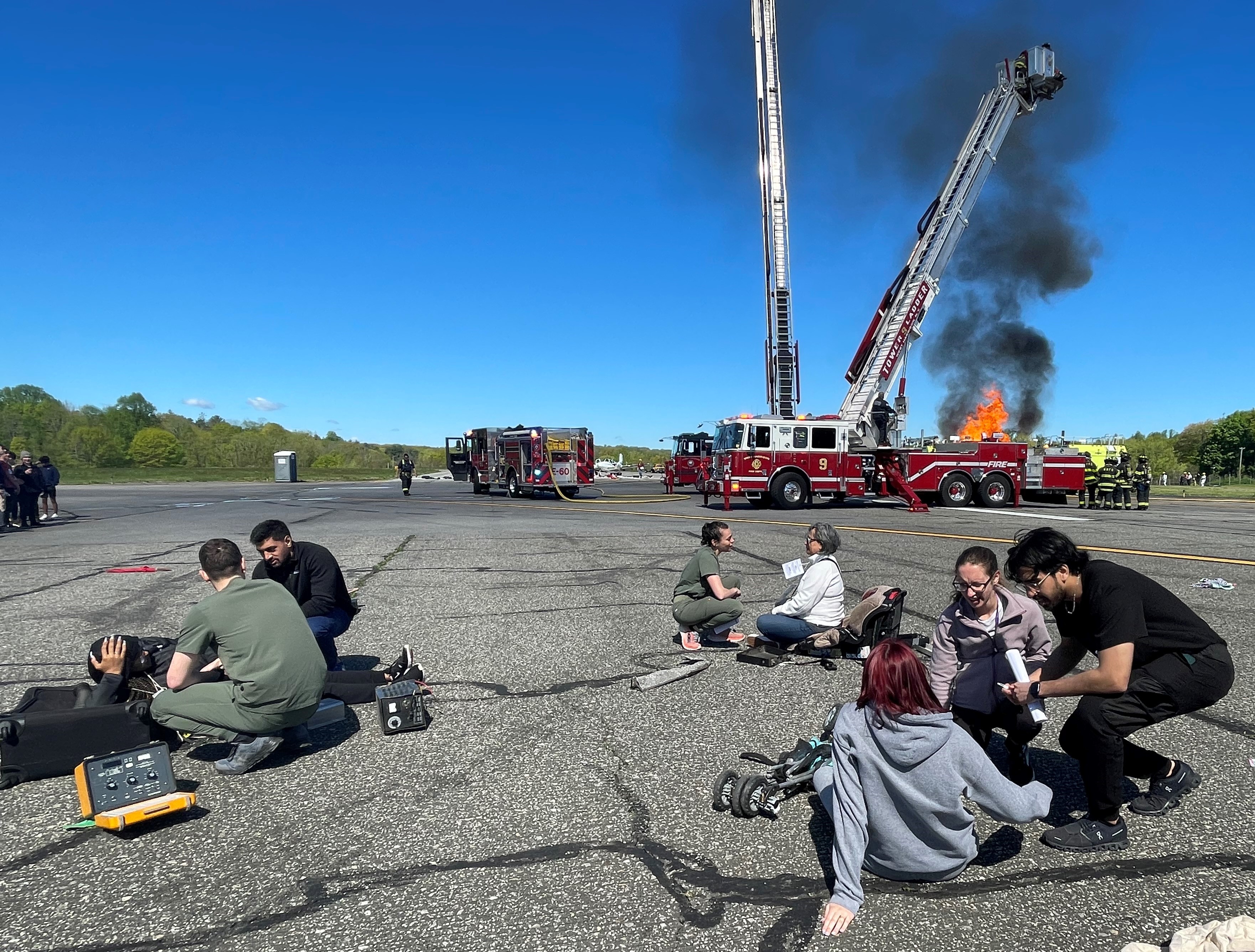
SOM Students Participate in Simulated Mass Casualty Event at Airport
Students Performed Triage and Acted as Hospitalists and Victims During Simulation at Westchester County Airport

School of Medicine (SOM) students in the newly formed Disaster Medicine Club participated in a simulated mass casualty event organized by Westchester County at the Westchester County Airport on May 6. Six students played both medical triage and receiving hospitalist roles, working alongside county emergency and airport personnel, while three others volunteered as victims in full moulage on the scene.
The full-scale exercise at the airport simulated a crash of two airplanes, causing a subsequent fire and leaving 188 “victims” scattered on the tarmac.
“Participating in this exercise was an incredible opportunity for our club members to put our skills into practice and gain valuable experience in disaster medicine,” said Megan Claypool, SOM Class of 2024. “Through working alongside paramedics, EMTs, firefighters and other emergency personnel, we were able to see the importance of collaboration in these emergency situations.”
Students in the medical triage role were first to arrive on the scene and were tasked with quickly evaluating each victim and stabilizing them as necessary. They then rode in an ambulance back to the fabricated hospital, where they acted as the receiving hospitalist, taking reports from the first responders, transporting the patients in and performing a secondary triage. Simultaneously, they also evaluated the transporters by noting if each ambulance had patients who were correctly triaged on the field and had an accurate report.
“Being part of this large-scale simulation was truly an invaluable experience. Triaging patients into different treatment categories based on their likely survival, working alongside the EMS crew to transport patients and acting as the receiving hospital for secondary triage and definitive treatment, we were able to really learn about all of the different stages that go into managing a large-scale disaster,” said Tegh Jauhal, SOM Class of 2024. “There is only so much one can study from textbooks and lectures. Real emergency situations are messy, chaotic and wholly unpredictable. The only way to come even remotely close to experiencing these are through hands-on-workshops and real-life simulations such as this drill. Coming out of this experience, I feel confident in my ability to assist in an emergency situation.”

